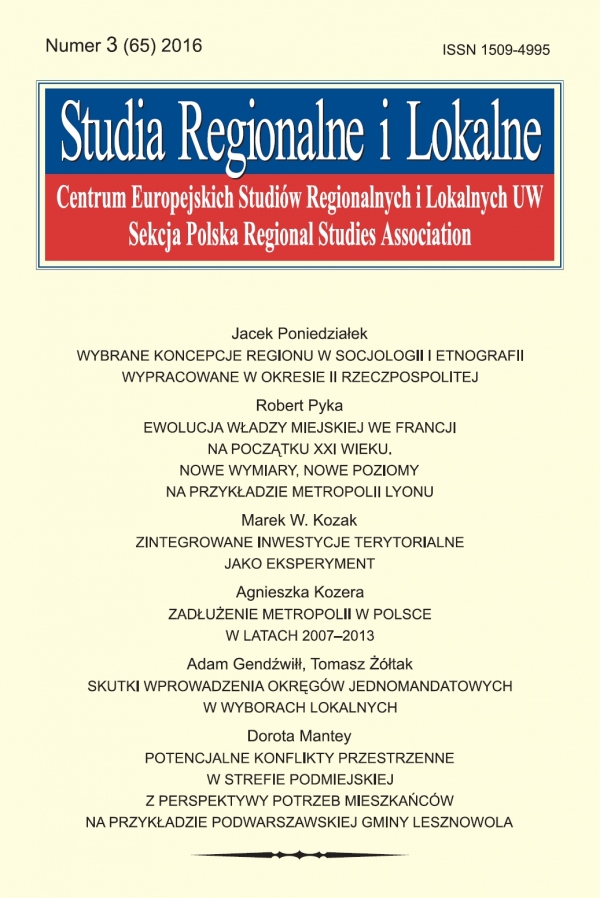Issue:
3(65)/2016
Adam Gendźwiłł, Tomasz Żółtak
The consequences of the introduction of single-member districts in local elections
DOI: 10.7366/1509499536505
Skutki wprowadzenia okręgów jednomandatowych w wyborach lokalnych
Autorzy przedstawiają podstawowe skutki wprowadzenia reguły większościowej w okręgach jednomandatowych (systemu FPTP) w wyborach do rad gmin w Polsce. Analizują wyniki wyborów lokalnych z 2010 i 2014 r. (przed i po zmianie reguł). Wykorzystując schemat quasi-eksperymentalny (metoda diffrence-in-diffrences), skupiają się na zmianach, jakie zaszły w gminach, w których wcześniej obowiązywał system głosowania blokowego, a także w gminach, w których wcześniej stosowany był system proporcjonalny. Analizy empiryczne pokazują, że zmiana systemu głosowania blokowego na system FPTP przyniosła jedynie marginalne konsekwencje. Zastąpienie systemu proporcjonalnego systemem FPTP, dość paradoksalnie, zwiększyło liczbę komitetów ubiegających się o mandaty. Wzrosła jednak dysproporcjonalność, a także odsetek głosów oddanych na komitety pozbawione reprezentacji, zmniejszyło się natomiast rozdrobnienie rad gmin. Tam, gdzie przestał obowiązywać system proporcjonalny, spadła znacznie liczba kandydatów; wbrew przypuszczeniom nie zmniejszył się jednak odsetek kobiet wybieranych na radnych. JOW-y przyniosły natomiast dalszą marginalizację ogólnokrajowych partii politycznych na szczeblu lokalnym.
The consequences of the introduction of single-member districts in local elections
The paper presents the basic consequences of the introduction of single-member districts (the FPTP system) in municipal elections in Poland. The authors analyze the results of the 2010 and 2014 elections (before and after the electoral reform). Basing on the difference-in-differences research scheme, the paper presents changes in the municipalities where either block- -voting or proportional representation systems were replaced by the FPTP. The empirical analyses demonstrate that the change from the BV to the FPTP system brought only marginal effects. The replacement of the PR system by the FPTP was more visible. Quite paradoxically, it increased the number of committees competing in the elections. However, the disproportionality and the share of wasted votes increased significantly, while the fragmentation of local councils decreased. In the municipalities previously using a proportional representation system, the number of candidates decreased visibly; contrary to the initial assumptions, its impact was neutral to the share of elected female councillors. The introduction of the FPTP system significantly limited the already weak presence of nation-wide political parties in local councils.
Affiliation:
Adam Gendźwiłł: Uniwersytet Warszawski, Wydział Geografii i Studiów Regionalnych, Zakład Rozwoju i Polityki Lokalnej, ul. Krakowskie Przedmieście 30, pok. 54, 00-325 Warszawa;
a.gendzwill@uw.edu.pl Tomasz Żółtak: Uniwersytet Warszawski, Instytut Socjologii, ul. Karowa 18, 00-324 Warszawa;
zoltakt@is.uw.edu.pl 


